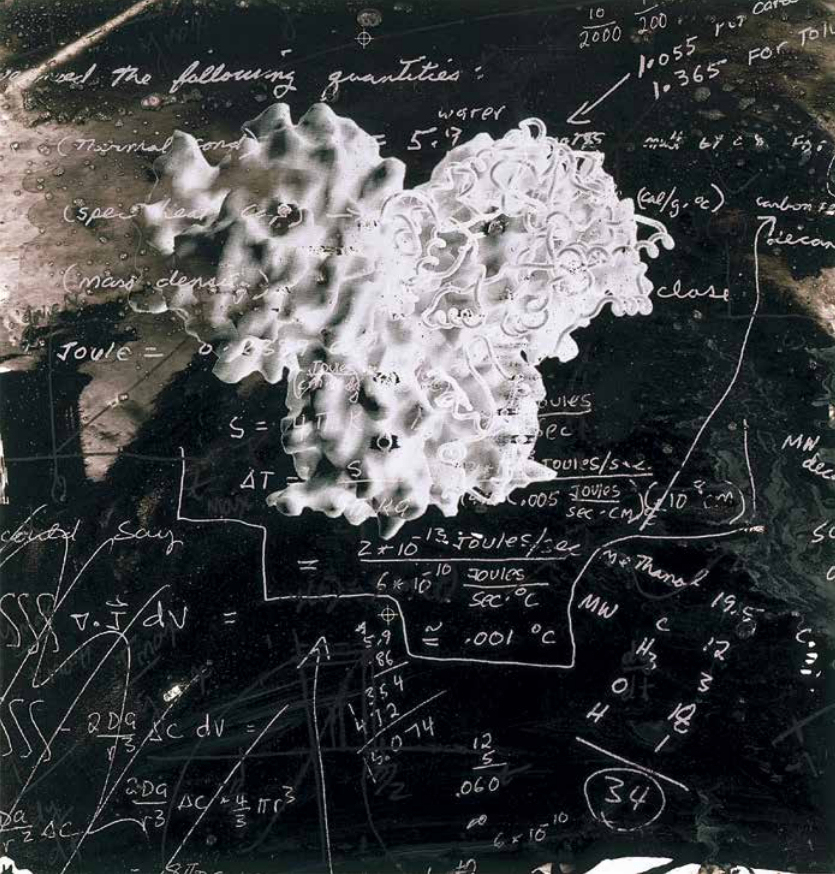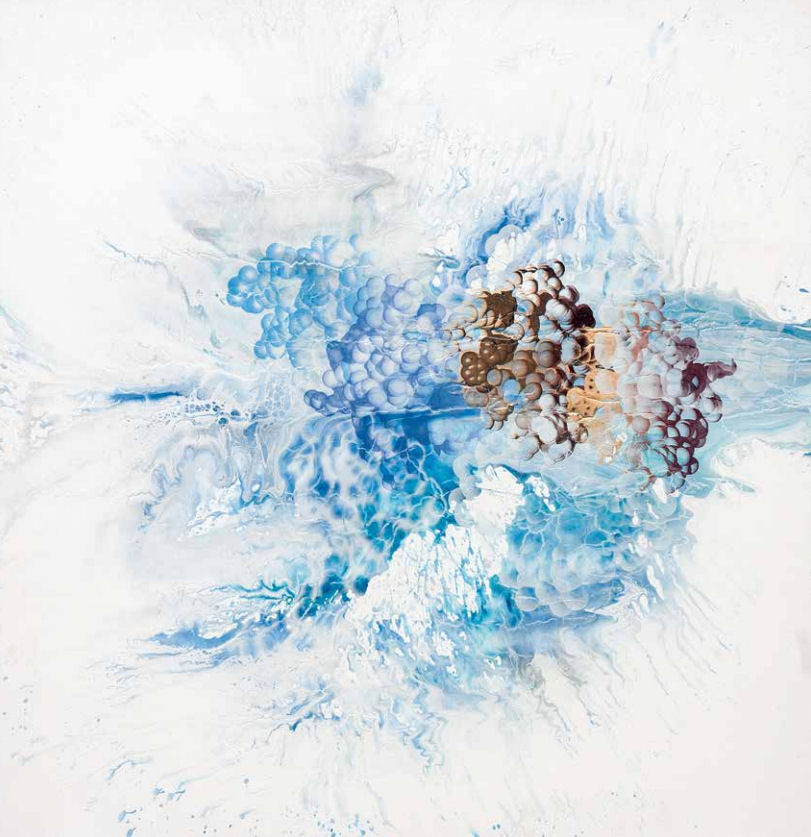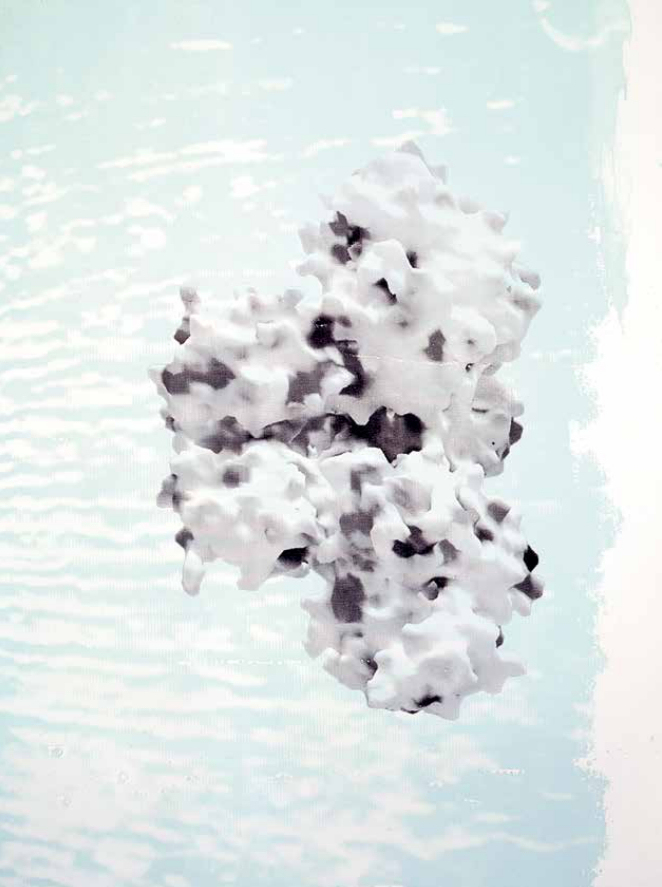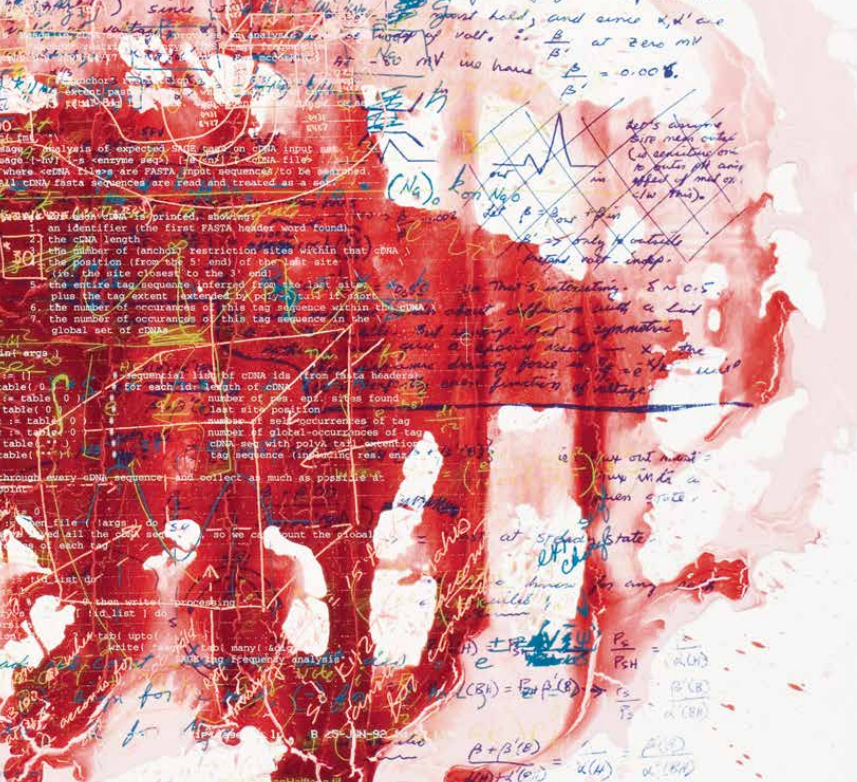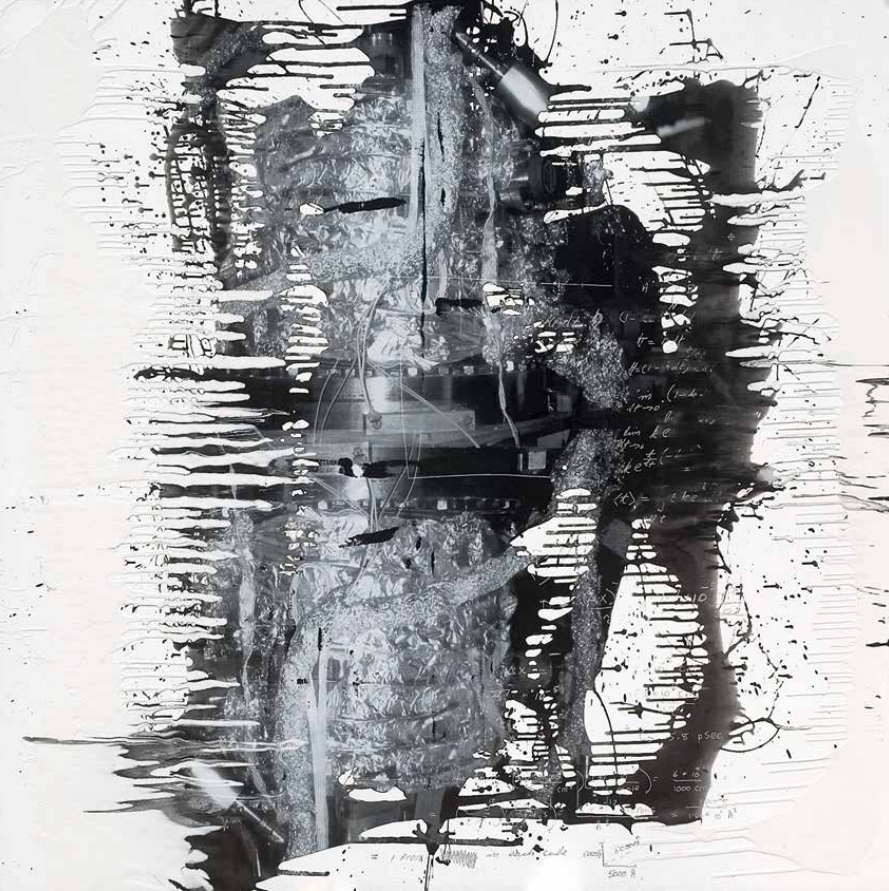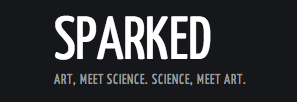
DC exhibit spotlights the art of ion movement
New York artist Steve Miller’s impressive span of work over more than 30 years feels almost too vast to describe. It’s touched on the Amazon rainforest, x-ray technology, fashion, protein structures, and particle accelerators, to name but a few areas. His new “Crossing the Line” exhibit in Washington, DC, pulls together works from his collaboration with Nobel-Prize-winning chemist Rod MacKinnon.
The collection, which features 11 paintings, is being shown at the National Academy of Sciences from August 5 through January 13. Miller and MacKinnon met at Brookhaven National Laboratory, which Miller first visited in 2000, according to an article by Steven Deitz.
At Brookhaven, he first collaborated with physicist Stephen Adler, producing the “Neolithic Quark”series, which contrasts early Chinese pottery with research data collected from the Relativistic Heavy Ion Collider particle accelerator — both of which investigate matter, in their own ways and in their own time periods.
“[The ‘Neolithic Quark’] project documents a conceptual timeline from the earliest efforts of civilization to the current scientific investigations about the nature of matter,” Miller writes on his website.
His work at Brookhaven eventually led him to MacKinnon, who won the Nobel Prize in Chemistry in 2003 for his research on the structure and function of ion channels. Miller’s work from this collaboration incorporates protein structures from MacKinnon’s investigations, the x-ray technology used, and even Mackinnon’s handwritten notes.
In 2007, items from the collaboration were featured at the Rose Art Museum at Brandeis University in a collection called “Spiraling Inward.” A number of those works are part of the current exhibit in DC, according to the “Crossing the Line” show catalog.
Other recent projects have taken a more environmental tack: For the “Health of the Planet” series, Miller traveled to Brazil and took x-rays of plants and animals in the Amazon rainforest, which he describes as the “lungs of our planet” on his site. The series shows the innerworkings of various flowers, seeds, and roots, among other items; some remain the translucent gray and white of x-rays, while others are splashed with brilliant color. The works were shown at the beginning of this year in a solo exhibit at Galerie Rigassi in Bern, Switzerland.
Regarding Miller’s combination of science and art, “Crossing the Line” curator Marvin Heiferman offers an interesting view:
Commenting on his long-standing interest in working with scientists, Miller says, ‘We’re all asking questions, trying to understand what forces make or shape who we are.’ For him, art and science are parallel dialogs about possibility; when they intersect, the context of each changes. What results, as these paintings reveal, can be unexpected, engaging, and powerful.

